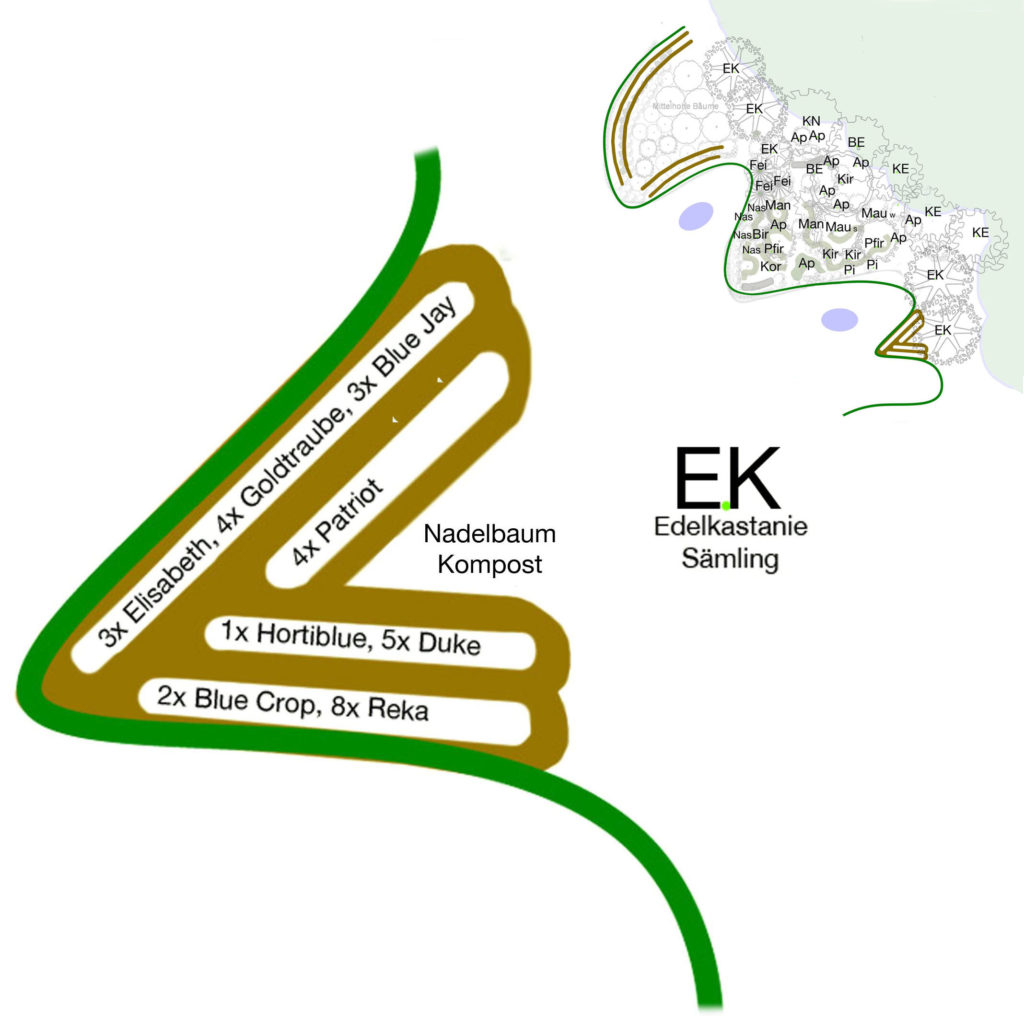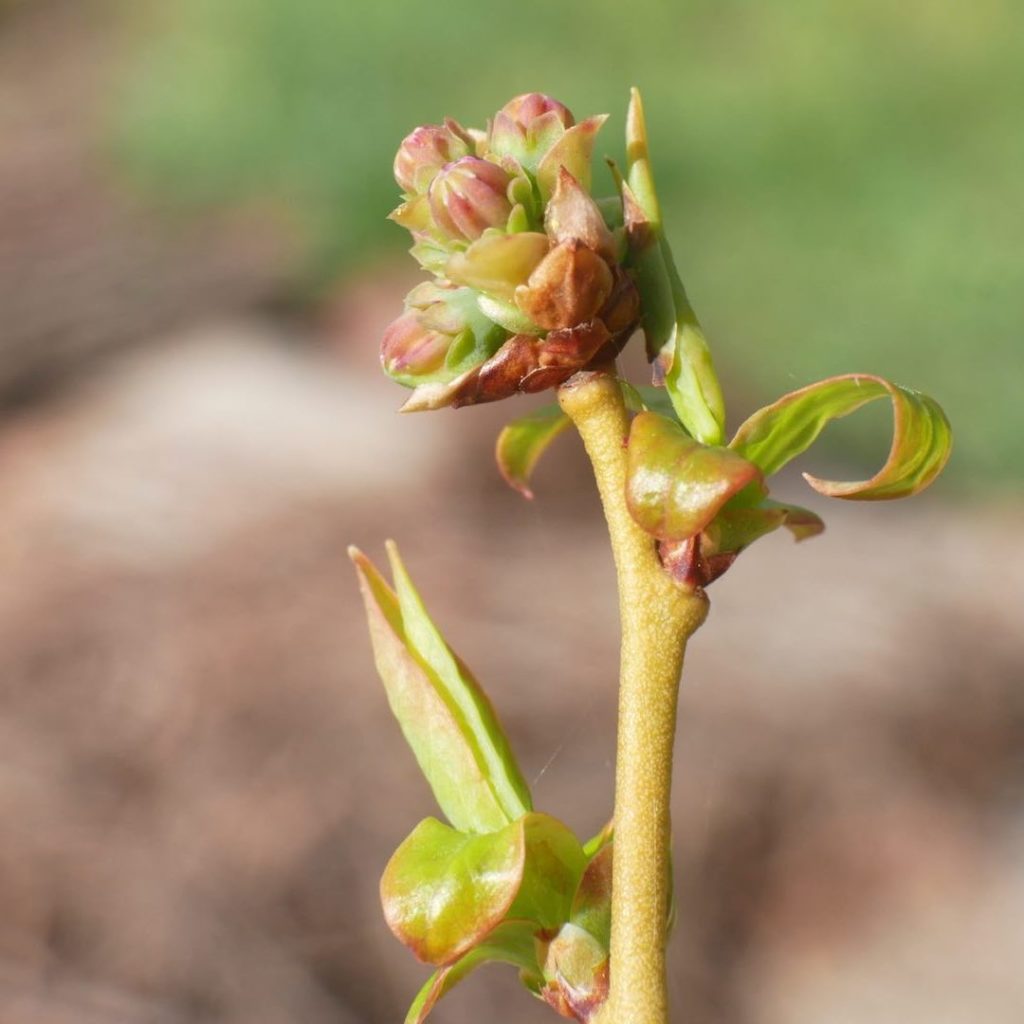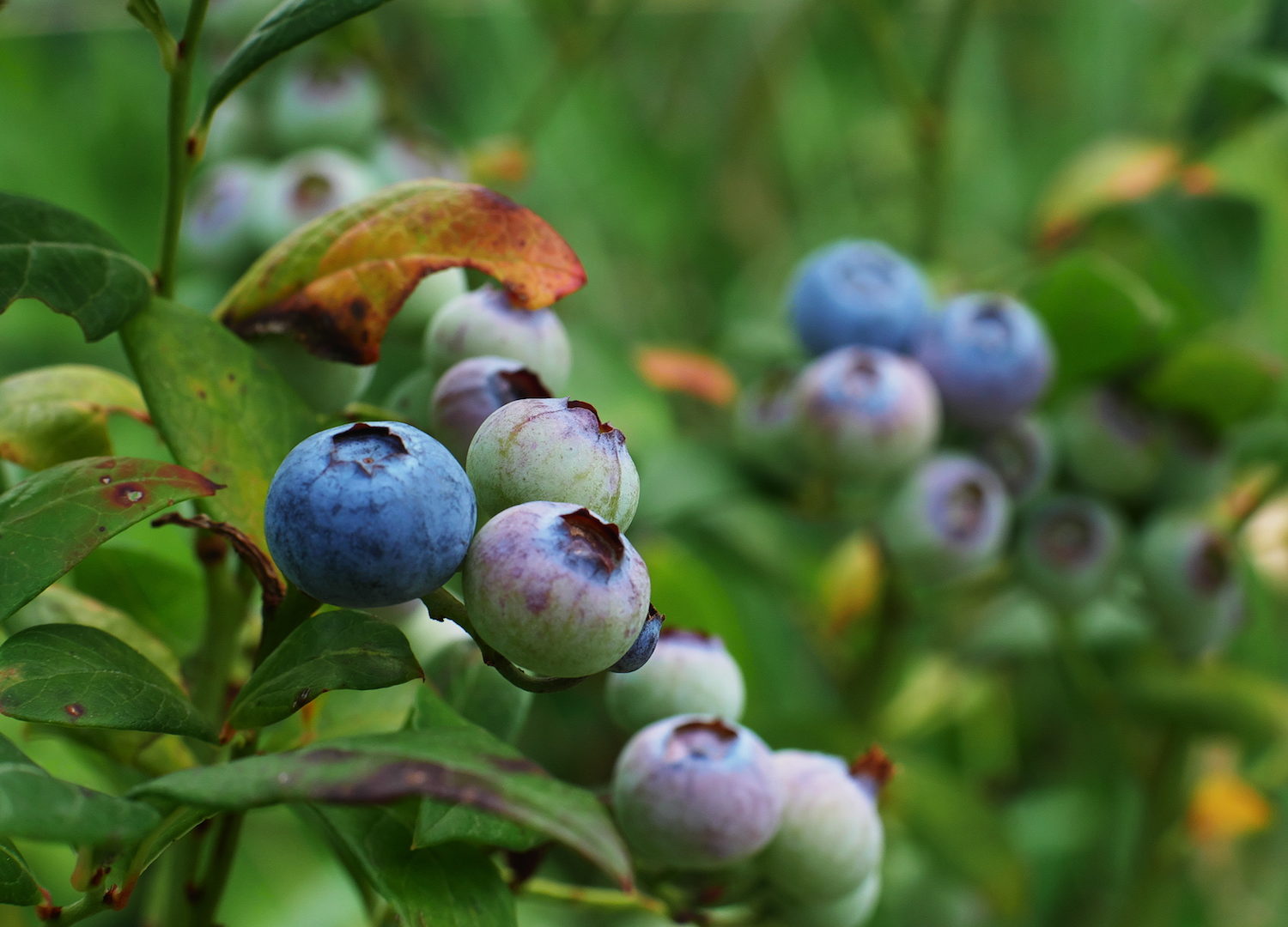In the easternmost “finger” of the sun trap an area with more acidic soil is designed. Eight different varieties of cultivated blueberries (growth height up to 2.5m) were planted there along with chestnuts. These species do not like calcareous soil. With mulch of tannic and thus acidic decaying deciduous and coniferous trees, coffee grounds & chopped Christmas trees, we are shifting the environment in this location to a slightly more sour direction with a lower pH over the years to come.

As we know from the well drilling, there is lumpy lime present in our area in 11 meters depth. We assume that the plants do not root that far and that the influence of the lime does not extend upward because a sand and later clay layer extends to about 7m. In the soil sample, the pH was found to be 6.3, so it can still be significantly changed here.
Since blueberries like a location that is as moist as possible, the most humid area of the south meadow was chosen as the position for planting. With semi-daily shade from scattered tall trees to the east, south, and southwest, this area loses less water from strong sunlight in midsummer. Half of the rows were thickly mulched with moss and received an underplanting of wild strawberries. In the other two rows, wood chips, coffee grounds and edible mushroom species are being experimented with for the thick mulch layer.
Irrigation is a challenge because, except for the Blue Crop and Reka varieties, all other blueberry varieties are sensitive to calcium and so priority should be given to using collected rainwater for watering. By arranging different varieties, different zones were created for watering and harvest planning.
Blueberries have a life expectancy of 25-30 years and can be rejuvenated by vegetative reproduction.


